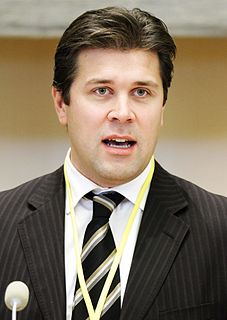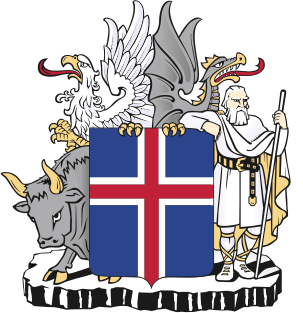| Institute | Release date | V | S | P | A | B | D | C | Others | Lead |
|---|
| Gallup | 000000002016-10-28-000028 Oct 2016 | 16.5% | 7.4% | 17.9% | 6.8% | 9.3% | 27.0% | 8.8% | | 9.1% |
| MMR | 000000002016-10-28-000028 Oct 2016 | 16.2% | 6.1% | 20.5% | 6.7% | 11.4% | 24.7% | 8.9% | 5.5% | 4.2% |
| Háskóli Íslands | 000000002016-10-27-000027 Oct 2016 | 16.8% | 5.7% | 21.2% | 6.7% | 10.1% | 22.5% | 11.4% | 5.5% | 1.3% |
| Fréttablaðið / Stöð 2 / Vísir | 000000002016-10-27-000027 Oct 2016 | 16.4% | 5.7% | 18.4% | 6.3% | 9.9% | 27.3% | 10.5% | 5.5% | 8.9% |
| MMR | 000000002016-10-26-000026 Oct 2016 | 16.0% | 7.6% | 19.1% | 8.8% | 10.0% | 21.9% | 9.3% | 7.3% | 2.8% |
| Fréttablaðið / Stöð 2 / Vísir | 000000002016-10-26-000026 Oct 2016 | 16.4% | 6.0% | 20.3% | 5.1% | 11.2% | 25.1% | 10.8% | 5.1% | 4.8% |
| Háskóli Íslands | 000000002016-10-21-000021 Oct 2016 | 18.6% | 6.5% | 22.6% | 6.0% | 9.1% | 21.1% | 8.8% | 7.3% | 1.5% |
| Fréttablaðið / Stöð 2 / Vísir | 000000002016-10-18-000018 Oct 2016 | 19.2% | 6.5% | 20.7% | 7.4% | 8.5% | 23.7% | 6.6% | 7.4% | 3.0% |
| MMR | 000000002016-10-14-000014 Oct 2016 | 14.5% | 9.0% | 19.6% | 8.2% | 9.2% | 21.4% | 10.2% | 7.9% | 1.8% |
| Háskóli Íslands | 000000002016-10-14-000014 Oct 2016 | 17.7% | 6.9% | 17.5% | 7.7% | 8.6% | 21.5% | 11.4% | 8.7% | 4.0% |
| Gallup | 000000002016-10-14-000014 Oct 2016 | 14.5% | 7.1% | 18.3% | 7.7% | 9.8% | 22.6% | 12.4% | 7.6% | 4.3% |
| Fréttablaðið / Stöð 2 / Vísir | 000000002016-10-12-000012 Oct 2016 | 15.1% | 7.3% | 22.8% | 8.2% | 8.5% | 22.7% | 8.4% | 7.0% | 0.1% |
| Fréttablaðið / Stöð 2 / Vísir | 000000002016-10-05-00005 Oct 2016 | 12.6% | 8.8% | 19.2% | 6.9% | 11.4% | 25.9% | 6.9% | 8.3% | 6.7% |
| Gallup | 000000002016-09-30-000030 Sep 2016 | 15.6% | 8.5% | 20.6% | 4.7% | 8.2% | 23.7% | 13.4% | 5.4% | 3.1% |
| Fréttablaðið / Stöð 2 / Vísir | 000000002016-09-28-000028 Sep 2016 | 12.9% | 5.9% | 19.9% | 3.6% | 12.6% | 34.6% | 7.3% | 3.2% | 14.7% |
| MMR | 000000002016-09-26-000026 Sep 2016 | 11.5% | 9.3% | 21.6% | 4.9% | 12.2% | 20.6% | 12.3% | 6.7% | 1.0% |
| MMR | 000000002016-09-22-000022 Sep 2016 | 13.2% | 8.1% | 22.7% | 4.1% | 11.0% | 22.7% | 11.5% | 6.7% | Tied |
| Gallup | 000000002016-09-16-000016 Sep 2016 | 13.5% | 8.8% | 23.1% | 2.9% | 9.4% | 25.5% | 12.2% | 4.6% | 1.4% |
| Fréttablaðið / Stöð 2 / Vísir | 000000002016-09-08-00008 Sep 2016 | 12.7% | 7.5% | 29.5% | 2.0% | 10.7% | 28.2% | 6.7% | 2.7% | 1.3% |
| Gallup | 000000002016-09-06-00006 Sep 2016 | 16.2% | 8.3% | 25.8% | 2.9% | 9.0% | 26.3% | 10.6% | 0.9% | 0.5% |
| MMR | 000000002016-08-30-000030 Aug 2016 | 12.4% | 9.1% | 22.4% | 4.5% | 10.6% | 24.6% | 8.8% | 7.6% | 2.2% |
| Gallup | 000000002016-07-29-000029 Jul 2016 | 16.8% | 8.0% | 25.3% | 4.2% | 9.9% | 26.2% | 9.0% | 0.6% | 0.9% |
| MMR | 000000002016-07-25-000025 Jul 2016 | 12.9% | 8.4% | 26.8% | 3.9% | 8.3% | 24.0% | 9.4% | 6.3% | 2.8% |
| MMR | 000000002016-07-07-00007 Jul 2016 | 18.0% | 10.9% | 24.3% | 2.9% | 6.4% | 25.3% | 6.7% | 5.4% | 1.0% |
| Gallup | 000000002016-06-29-000029 Jun 2016 | 15.2% | 8.2% | 27.9% | 3.4% | 10.0% | 25.1% | 9.4% | 0.8% | 2.8% |
| Háskóli Íslands | 000000002016-06-24-000024 Jun 2016 | 17.0% | 9.0% | 28.0% | 4.5% | 9.5% | 19.7% | 9.7% | 2.6% | 8.3% |
| Háskóli Íslands | 000000002016-06-14-000014 Jun 2016 | 15.9% | 7.6% | 29.9% | 2.9% | 11.1% | 22.7% | 9.1% | 0.8% | 7.2% |
| Háskóli Íslands | 000000002016-06-04-00004 Jun 2016 | 16.5% | 7.2% | 28.3% | 3.8% | 11.8% | 23.9% | 7.9% | 0.6% | 4.4% |
| Gallup | 000000002016-06-01-00001 Jun 2016 | 16.8% | 7.7% | 27.4% | 4.0% | 10.2% | 28.5% | 4.3% | 1.1% | 1.1% |
| Fréttablaðið / Stöð 2 / Vísir | 000000002016-05-27-000027 May 2016 | 18.1% | 6.1% | 28.7% | 2.5% | 7.3% | 31.5% | | 5.8% | 2.8% |
| Háskóli Íslands | 000000002016-05-17-000017 May 2016 | 18.9% | 8.9% | 25.8% | 4.8% | 8.2% | 28.2% | 3.5% | 1.7% | 2.4% |
| MMR | 000000002016-05-13-000013 May 2016 | 15.8% | 7.5% | 31.0% | 4.9% | 10.4% | 26.3% | | 2.5% | 4.7% |
| Fréttablaðið | 000000002016-05-12-000012 May 2016 | 19.8% | 7.4% | 30.3% | 3.1% | 6.5% | 31.1% | | 1.8% | 0.8% |
| Fréttablaðið | 000000002016-05-06-00006 May 2016 | 14.0% | 8.4% | 31.8% | 4.0% | 8.3% | 29.9% | | 3.6% | 1.9% |
| MMR | 000000002016-05-03-00003 May 2016 | 14.0% | 9.7% | 28.9% | 3.4% | 11.2% | 27.8% | | 5.0% | 1.1% |
| Gallup | 000000002016-04-30-000030 Apr 2016 | 18.4% | 8.3% | 26.6% | 5.2% | 10.5% | 27.0% | 3.5% | 0.5% | 0.4% |
| Gallup | 000000002016-04-13-000013 Apr 2016 | 19.8% | 9.0% | 29.3% | 5.0% | 6.9% | 26.7% | 2.7% | 0.6% | 2.6% |
| Háskóli Íslands | 000000002016-04-08-00008 Apr 2016 | 14.7% | 9.5% | 30.9% | 4.8% | 12.9% | 23.3% | | 3.9% | 7.6% |
| Maskína | 000000002016-04-08-00008 Apr 2016 | 20.0% | 7.2% | 34.2% | 5.2% | 9.4% | 21.3% | | 2.7% | 12.9% |
| Gallup | 000000002016-04-07-00007 Apr 2016 | 16.7% | 7.6% | 32.4% | 5.6% | 10.8% | 21.9% | 3.3% | 1.7% | 11.5% |
| MMR | 000000002016-04-06-00006 Apr 2016 | 12.8% | 9.9% | 36.7% | 5.8% | 8.7% | 22.5% | | 3.6% | 12.2% |
| Fréttablaðið | 000000002016-04-05-00005 Apr 2016 | 11.2% | 10.2% | 43.0% | 3.8% | 7.9% | 21.6% | | 2.3% | 21.4% |
| Háskóli Íslands | 000000002016-04-05-00005 Apr 2016 | 14.9% | 8.1% | 39.4% | 4.4% | 10.0% | 18.8% | | 4.4% | 20.6% |
| Gallup | 000000002016-03-31-000031 Mar 2016 | 11.0% | 9.5% | 36.1% | 3.2% | 12.0% | 23.2% | 2.1% | 2.9% | 12.9% |
| MMR | 000000002016-03-18-000018 Mar 2016 | 9.3% | 9.2% | 38.3% | 4.2% | 12.4% | 22.9% | | 3.4% | 15.4% |
| Fréttablaðið | 000000002016-03-09-00009 Mar 2016 | 8.4% | 8.2% | 38.1% | 1.8% | 12.8% | 27.6% | | 3.1% | 10.5% |
| MMR | 000000002016-03-02-00002 Mar 2016 | 7.8% | 7.8% | 37.0% | 4.2% | 12.8% | 23.4% | | 7% | 13.6% |
| Gallup | 000000002016-03-02-00002 Mar 2016 | 10.8% | 9.7% | 35.9% | 3.3% | 11.0% | 23.7% | | 5.6% | 12.2% |
| Gallup | 000000002016-02-02-00002 Feb 2016 | 10.8% | 9.2% | 35.3% | 3.6% | 12.0% | 24.4% | | 4.7% | 10.9% |
| MMR | 000000002016-02-02-00002 Feb 2016 | 11.0% | 9.4% | 35.6% | 4.4% | 12.2% | 21.1% | | 5.9% | 14.5% |
| Fréttablaðið | 000000002016-01-30-000030 Jan 2016 | 9.6% | 9.9% | 41.8% | 1.6% | 10.2% | 23.2% | | 3.7% | 18.6% |
| Gallup | 000000002016-01-02-00002 Jan 2016 | 10.2% | 10.4% | 33.1% | 4.2% | 12.0% | 25.2% | | 4.9% | 7.9% |
| MMR | 000000002015-12-18-000018 Dec 2015 | 11.4% | 12.9% | 34.9% | 5.3% | 11.5% | 20.6% | | 3.4% | 14.3% |
| Gallup | 000000002015-12-04-00004 Dec 2015 | 11.4% | 10.1% | 32.9% | 3.9% | 12.0% | 24.8% | | 4.9% | 8.1% |
| MMR | 000000002015-11-16-000016 Nov 2015 | 9.9% | 10.5% | 35.3% | 4.6% | 10.8% | 23.7% | | 5.2% | 11.6% |
| Gallup | 000000002015-11-04-00004 Nov 2015 | 11.1% | 10.6% | 35.5% | 4.6% | 9.6% | 24.6% | | 4.4% | 0.9% |
| MMR | 000000002015-10-21-000021 Oct 2015 | 11.8% | 11.3% | 34.2% | 6.5% | 10.4% | 21.7% | | 4.1% | 12.5% |
| Gallup | 000000002015-10-02-00002 Oct 2015 | 10.6% | 10.1% | 34.6% | 5.6% | 10.1% | 24.4% | | 4.6% | 10.2% |
| MMR | 000000002015-09-03-00003 Sep 2015 | 9.6% | 10.6% | 33.0% | 5.8% | 11.4% | 25.3% | | 4.3% | 7.7% |
| Gallup | 000000002015-09-01-00001 Sep 2015 | 11.8% | 9.3% | 35.9% | 4.4% | 11.1% | 21.7% | | 5.8% | 14.2% |
| Gallup | 000000002015-08-07-00007 Aug 2015 | 8.9% | 12.2% | 32.3% | 5.0% | 12.4% | 24.0% | | 5.2% | 8.3% |
| MMR | 000000002015-08-04-00004 Aug 2015 | 10.2% | 9.6% | 35.0% | 4.4% | 12.2% | 23.1% | | 5.5% | 7.9% |
| MMR | 000000002015-06-30-000030 Jun 2015 | 12.0% | 9.3% | 33.2% | 5.6% | 10.6% | 23.8% | | 5.5% | 9.4% |
| Rúv | 000000002015-06-29-000029 Jun 2015 | 10.3% | 11.4% | 32.0% | 6.4% | 11.3% | 24.5% | | 4.1% | 7.5% |
| MMR | 000000002015-06-25-000025 Jun 2015 | 10.5% | 11.6% | 32.4% | 6.8% | 10.0% | 23.3% | | 5.4% | 9.1% |
| FBL | 000000002015-06-19-000019 Jun 2015 | 7.3% | 11.1% | 37.5% | 3.3% | 8.5% | 29.5% | | 2.8% | 8.0% |
| MMR | 000000002015-06-16-000016 Jun 2015 | 11.1% | 11.8% | 34.5% | 6.7% | 11.3% | 21.2% | | 3.5% | 13.3% |
| Gallup | 000000002015-06-01-00001 Jun 2015 | 9.8% | 12.4% | 34.1% | 7.4% | 8.9% | 23.0% | | 4.3% | 11.1% |
| MMR | 000000002015-05-26-000026 May 2015 | 10.4% | 13.1% | 32.7% | 6.3% | 8.6% | 23.1% | | 5.6% | 9.6% |
| MMR | 000000002015-05-04-00004 May 2015 | 10.8% | 10.7% | 32.0% | 8.3% | 10.8% | 21.9% | | 5.5% | 10.1% |
| Gallup | 000000002015-04-30-000030 Apr 2015 | 10.6% | 14.1% | 30.1% | 7.8% | 10.1% | 22.9% | | 4.4% | 9.2% |
| Gallup | 000000002015-03-30-000030 Mar 2015 | 10.1% | 15.8% | 21.7% | 10.9% | 10.8% | 25.0% | | 5.7% | 3.3% |
| Kjarninn | 000000002015-03-26-000026 Mar 2015 | 10.2% | 16.1% | 23.6% | 10.1% | 11.0% | 24.8% | | 4.2% | 1.2% |
| MMR | 000000002015-03-21-000021 Mar 2015 | 9.0% | 16.3% | 29.1% | 9.0% | 11.6% | 23.4% | | 1.7% | 5.7% |
| MMR | 000000002015-03-18-000018 Mar 2015 | 10.8% | 15.5% | 23.9% | 10.3% | 11.0% | 23.4% | | 5.1% | 0.5% |
| Fréttablaðið | 000000002015-03-11-000011 Mar 2015 | 10.4% | 16.1% | 21.9% | 9.2% | 10.1% | 28.0% | | 4.3% | 6.1% |
| Rúv | 000000002015-03-02-00002 Mar 2015 | 11.2% | 17.1% | 15.2% | 13.3% | 11.0% | 26.1% | | 6.1% | 9.0% |
| MMR | 000000002015-02-19-000019 Feb 2015 | 12.9% | 14.5% | 12.8% | 15.0% | 13.1% | 25.5% | | 6.2% | 10.5% |
| Gallup | 000000002015-02-03-00003 Feb 2015 | 11.0% | 18.0% | 12.0% | 13.0% | 13.0% | 27.0% | | 6.0% | 9.0% |
| MMR | 000000002015-01-14-000014 Jan 2015 | 11.9% | 15.9% | 12.8% | 16.9% | 9.4% | 27.3% | | 5.8% | '10.4% |
| Mbl | 000000002014-12-16-000016 Dec 2014 | 11.6% | 16.1% | 11.4% | 16.2% | 11.0% | 29.0% | | 4.7% | 12.8% |
| Fréttablaðið | 000000002014-11-17-000017 Nov 2014 | 13.1% | 19.2% | 9.2% | 12.5% | 12.8% | 32.9% | | | 13.7% |
| MMR | 000000002014-11-04-00004 Nov 2014 | 10.7% | 16.1% | 11.3% | 18.6% | 12.3% | 23.6% | | 7.4% | 5.0% |
| Gallup | 000000002014-10-03-00003 Oct 2014 | 13.0% | 19.0% | 7.0% | 16.0% | 12.0% | 27.0% | | | 8.0% |
| MMR | 000000002014-09-08-00008 Sep 2014 | 10.4% | 16.9% | 9.2% | 17.8% | 11.3% | 28.2% | | 6.2% | 10.4% |
| MMR | 000000002014-08-28-000028 Aug 2014 | 9.6% | 20.3% | 10.3% | 17.6% | 9.6% | 26.6% | | 6.0% | 6.3% |
| MMR | 000000002014-07-31-000031 Jul 2014 | 11.6% | 17.0% | 9.6% | 19.2% | 11.8% | 24.1% | | 6.7% | 7.1% |
| MMR | 000000002014-06-24-000024 Jun 2014 | 11.4% | 16.5% | 8.3% | 21.8% | 11.4% | 25.0% | | 5.6% | 3.2% |
| MMR | 000000002014-05-13-000013 May 2014 | 11.6% | 16.4% | 9.6% | 19.4% | 12.3% | 22.1% | | 8.6% | 2.7% |
| MMR | 000000002014-05-02-00002 May 2014 | 11.7% | 17.4% | 9.0% | 15.5% | 14.1% | 25.1% | | 7.2% | 7.7% |
| MMR | 000000002014-04-14-000014 Apr 2014 | 11.5% | 15.1% | 11.0% | 17.1% | 14.4% | 23.9% | | 7.0% | 6.8% |
| MMR | 000000002014-03-03-00003 Mar 2014 | 10.4% | 14.0% | 9.3% | 16.4% | 14.6% | 29.0% | | 5.6% | 12.6% |
| RÚV | 000000002014-02-27-000027 Feb 2014 | 13.0% | 16.8% | 9.8% | 15.8% | 15.3% | 23.7% | | 5.6% | 6.9% |
| Capacent | 000000002014-02-01-00001 Feb 2014 | 12.7% | 14.9% | 8.1% | 14.2% | 18.3% | 26.9% | | | 8.6% |
| MMR | 000000002014-01-22-000022 Jan 2014 | 11.0% | 17.1% | 6.9% | 15.9% | 17.0% | 26.3% | | 5.6% | 9.2% |
| Capacent | 000000002013-12-24-000024 Dec 2013 | 13.3% | 15.1% | 10.7% | 13.1% | 16.4% | 25.3% | | | 8.9% |
| MMR | 000000002013-11-30-000030 Nov 2013 | 12.6% | 13.8% | 9.0% | 15.2% | 15.0% | 26.8% | | | 11.6% |
| 2013 result | 000000002013-04-28-000028 Apr 2013 | 10.9% | 12.9% | 5.1% | 8.3% | 24.4% | 26.7% | | | 2.3% |
| Institute | Release date | V | S | P | A | B | D | C | Others | Lead |
|---|





















